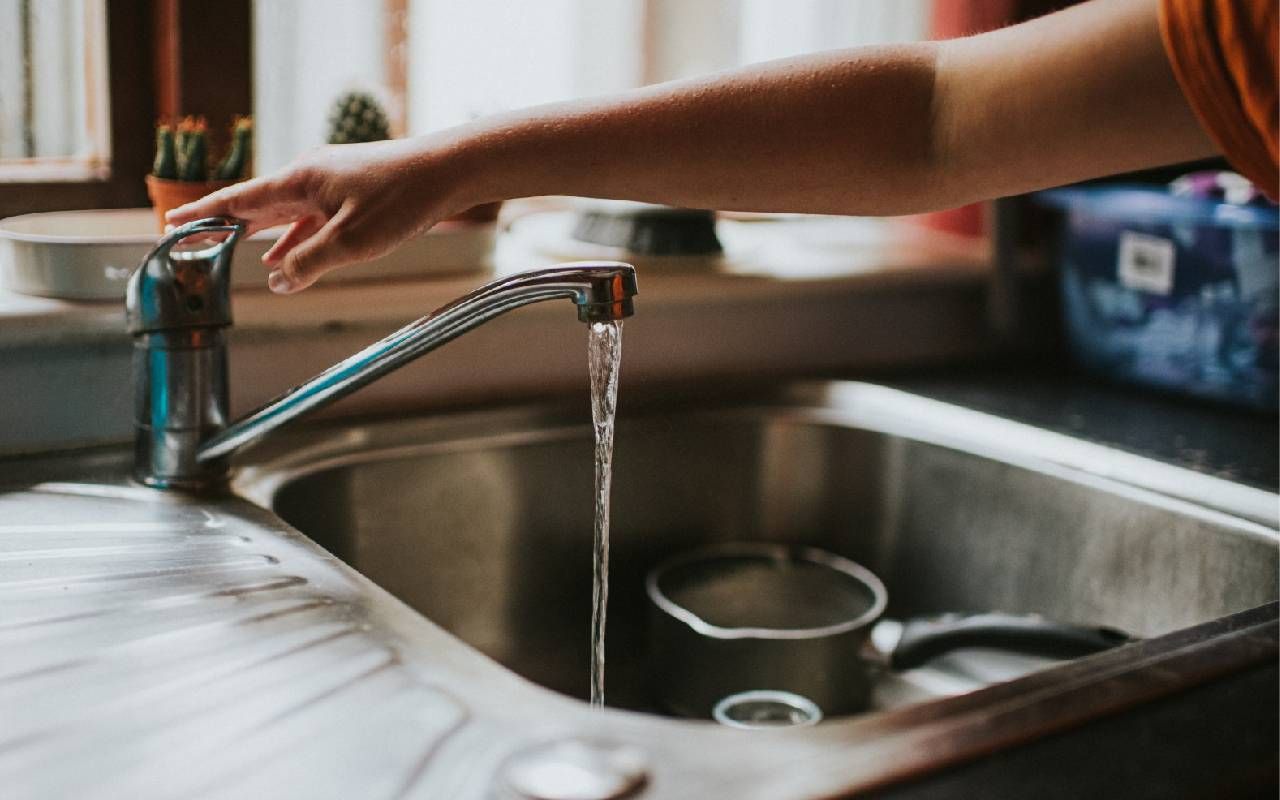Do You Know What's in Your Drinking Water?
Many rural residents on private wells don't. Here's how to find out.
According to the U.S. Geological Survey (USGS), 43 million Americans get their drinking water from domestic wells. Because these wells are on private property, it falls to the property owner, rather than a government entity, to ensure the safety of that water.

If you live on a property serviced by a domestic well, do you know what's in your water? According to experts we interviewed, if you haven't had a certified lab test your water within the past one to three years, the answer is no.
The Potential Health Cost of 'Free' Water
For most rural Americans, having a domestic well on site is a necessary part of living out in the country. There's a hefty up-front cost to install the well when a home is built, but then the homeowner never has to pay a water bill. However, according to Sydney Evans, a Senior Science Analyst at the Environmental Working Group (EWG), this "set it and forget it" mentality poses a real health risk.
"Pathogens are the biggest concern because they can cause acute illness, rather than building up over time."
"Because domestic wells aren't regulated the same way as public utilities are, there's less data available," Evans said, "but there may be radioactive contaminants like radium or uranium, arsenic, nitrates, and depending on the age of the home, lead in the water."
Perhaps the biggest risk, though, is from microbial pathogens (harmful bacteria such as E. Coli), because well water isn't treated. According to Bruce Lindsey, a coordinator for National Water Quality at the USGS, microbial contaminants were found at much higher rates than other contaminants in testing done as part of the organization's National Water Quality Assessment project.
Both Lindsey and Evans stressed that every home on a well should test annually for bacterial contamination."Pathogens are the biggest concern because they can cause acute illness, rather than building up over time," Evans said.
Rural water quality varies tremendously from place to place, and is impacted largely by the area's geology, the depth of the well and the environmental threats in the area.
"It's a no-brainer that if you put chemicals on top of sandy soil and then irrigate the heck out of it, you're going to have problems with the water."
What's more, risk factors can change over time. That was the case for Mike Tauber, a plumber from Hackensack, Minnesota. He and his wife built their house a few miles out of town in 1995. In 2014, a large-scale agriculture company bought the land adjacent to their property. In 2018, Tauber had a test well dug near the boundary of his property bordering the new farm, and began testing the water in 2019.
"We kind of knew it was coming, so we were prepared," Tauber said. "It's a no-brainer that if you put chemicals on top of sandy soil and then irrigate the heck out of it, you're going to have problems with the water." Lab results from his test well bore this out.
From 2019 to 2021, the nitrate level in his test well was well below 1 mg/L. In 2022, it jumped to 2.5, then 4.27 mg/L in the spring of 2023. In the fall of 2023, Tauber had the water tested twice to be sure the numbers he was seeing were accurate: 9.68 and 9.78 mg/L.
The Only Way to Know Is to Test
In a written response to questions, the U.S. Environmental Protection Agency (EPA) stated: "The quality and safety of drinking water from private domestic wells are not regulated by the Federal Government under the Safe Drinking Water Act nor by most state governments and laws. EPA recommends that well owners test their private well annually for total coliform bacteria, nitrates, total dissolved solids and pH levels. Owners can also contact your local health department to find out what substances may be common in the area's groundwater."
"The only real way to know, though, is to test your water."
At the EWG, Evans agreed. "The first place I recommend people look is any kind of public record - from when you purchased your home, something from the company that did the well drilling or county records," she said. "It's also a good idea to check nearby municipal water results from our database. The only real way to know, though, is to test your water."
The cost of having a certified lab test for a variety of contaminants can add up quickly, so we asked about lower-cost, at-home test kits. "Without looking at the individual tests and their claims and the science behind them, I can't comment as to their accuracy," Evans said. "Your best bet is going through a certified drinking water lab."
Evans also stressed that state and federal legal limits for certain contaminants are much higher than what is considered safe for human health. The EWG has created a page with recommended safe levels for some of the most common contaminants, with a link to a PDF listing around 100 more.
Treatment Options for Contaminated Water
So far, the well servicing Tauber's home has not tested high for nitrate, but he and his family use a countertop water filter just to be safe. He used the EWG's online water filter guide to choose the one that offered the best combination of protection against the specific contaminants in his area and long-term cost.
While a pitcher filter may be cheaper up-front, the cost of buying replacement filters, which wear out quicker, means your annual cost could be a lot higher.
We asked Evans about the guide and treating contaminated water in general. She explained that there are three main types of filters: activated carbon, like most countertop varieties; ion exchange systems, like water softeners, which are better against nitrate; and reverse osmosis, which tends to get most contaminants out but is quite pricey. "They're each effective against different types of contaminants," she said, "so the type and level of contaminants in your water will determine what filter type is best."
It's also important to think about ongoing costs. While a pitcher filter may be cheaper up-front, the cost of buying replacement filters, which wear out quicker, means your annual cost could be a lot higher. "And it's super important to follow the maintenance and filter replacement schedule according to the manufacturer's instructions," Evans said. After all, the whole reason for buying a filtration device is to remove contaminants, and a spent filter won't do that.
Resources for Individuals on Domestic Wells
For a big-picture understanding of ground and domestic well water quality, the USGS webpage on Domestic Water Supply Wells is an excellent resource.
For those who want to learn everything about well water basics, maintenance and quality, check out this library of resources from the National Groundwater Association.
The experts we talked to agreed, however, that your best resource is your county's Health or Environmental Services department. There you'll learn what contaminants may be present in your area and whether your county has a well water testing program in place.
If financial constraints have kept you from testing your water in the past, your county office should also know whether there are any free or subsidized testing and treatment programs available to you.
In Iowa, for example, free well water testing and financial aid for treatment have been offered in participating counties since 1987. According to Erik Day, of the state's Water Supply Engineering Section, more than 90% of counties are currently participating.
Other states offer free or subsidized domestic well water testing on a limited basis through one-time or recurring grants. This clickable map, published by the EPA, has links to resources for each state. Additionally, some counties and even nonprofits offer free well water testing clinics for the most common contaminants in the area.
Even if free testing and treatment aren't available in your area, it's worth spending the money to ensure your water is safe. With the average American using 82 gallons of water each day, limiting exposure to potentially harmful chemicals is money well spent. The average household on municipal water pays around $1,000 per year in water bills, so why not put a percentage of that amount toward ensuring that your drinking water is safe?


